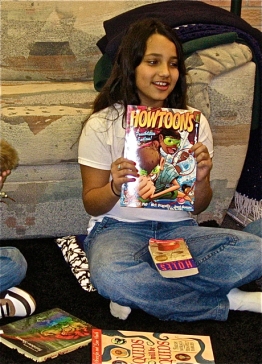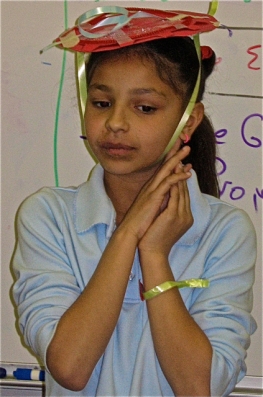Morning Meetings, Check-Ins, and Social-Emotional Learning
I am an advocate of integrating socio-emotional learning into the classroom.
It’s not enough to simply fill students’ brains with facts. A successful education demands that their character be developed as well. That’s where social and emotional learning comes in. SEL is the process of helping students develop the skills to manage their emotions, resolve conflict nonviolently, and make responsible decisions.
Research shows that promoting social and emotional skills leads to reduced violence and aggression among children, higher academic achievement, and an improved ability to function in schools and in the workplace. Students who demonstrate respect for others and practice positive interactions, and whose respectful attitudes and productive communication skills are acknowledged and rewarded, are more likely to continue to demonstrate such behavior. Students who feel secure and respected can better apply themselves to learning. (Why Champion Social and Emotional Learning?)
Implementing morning meetings is a method to do so.
Today, many children in kindergartens, elementary and middle schools around the country launch their school days in Morning Meetings. All classroom members—grown-ups and students—gather in a circle, greet each other, listen and respond to each other’s news, practice academic and social skills, and look forward to the events in the day ahead. Morning Meeting is a particular and deliberate way to begin the day, a way that builds a community of caring and motivated learners. (Morning Meeting: A Powerful Way to Begin the Day)
 http://www.responsiveclassroom.org/product/morning-meeting-book
http://www.responsiveclassroom.org/product/morning-meeting-book
See ideas for morning meetings at http://www.responsiveclassroom.org/category/category/morning-meeting.
I used morning meetings with the gifted elementary students I taught. I taught each group of about 20 students, grades 3rd through 5th, for a full day/one day a week. We began our days with morning meetings. The meetings included a check-in where students reported how they doing and feeling, and if anything significant was happening in their lives. To keep the students’ interest and to introduce unit concepts, I had them create artifacts for these morning meeting check-ins (see below). The goals and outcomes of these check-ins included:
- Increased emotional awareness and intelligence
- Increased social intelligence as learners developed listening and empathy skills
- The ability to represent thoughts and feelings in metaphoric form
- Concrete, student-created examples of content area concepts
Here are some examples of what I have done in my class . . .
Morning meetings started with a beat of the drum:
Use of feelings cards:
Found at http://www.innovativeresources.org/default.asp?cmd=product&productid=40401
Use of student-created feeling masks
Use of feelings books:
Choose a book cover that represents how you are doing and feeling:
Create a hat of a literary character to represent how you are doing and feeling:
Create a tangram image that represents how you are doing and feeling. I had about two dozen small tangram sets and decks of cards with tangram puzzles.
Construct a 3-D geometry symbol of how you are doing and feeling. The school had a die cut for 3-D origami. I cut out a variety of shapes. Students, then, selected those they want to create for their check-in.
Select a constellation that represents how you are doing and feeling:
Create your own constellation that represents how you are doing and feeling:
Select a bone of the human body that represents how you are doing and feeling:
Written by Jackie Gerstein, Ed.D.
August 5, 2012 at 4:14 pm
Posted in Education
Tagged with educational reform, experiential learning, social learning, social-emotional learning
3 Responses
Subscribe to comments with RSS.
Leave a comment Cancel reply
This site uses Akismet to reduce spam. Learn how your comment data is processed.














I’ve heard of this being done at some of the schools my son has attended. It sounds like a great idea, especially for special needs kids who don’t always know how to communication how they are feeling for the day, and it not only helps them to identify their own mental state of being, but I imagine it helps the teacher knows where each child’s mental state is going forward for the rest of the day.
techcommgeekmom
August 5, 2012 at 4:22 pm
I used a variation of this idea when presented with a 1L (lowest academic level before a Developmental Delay) an entire class of identified students – and a lot of social emotional challenges. After modifying a few things such as; getting each student a smooth rock from a stream to use as a talking stone we never started the class without our “talking circle” the equivalent to the morning meeting. To make a long story short during my semester I had only one semi-serious behavioral incident. The kids – grade 9 students – liked to come to class and we developed a strong trusting bond. I do not know how to say this without sounding artificial, but the experience with my kids in a nonjudgmental process influenced the kids, and it changed me as a person and a teacher. The “talking circle” process was introduced to me from a colleague and friend who is aboriginal. During this semester I had my performance appraisal and I chose to use my 1L class. Both the Principal and V.P. were surprised and even shocked at the response of the kids to the process.
To be successful, in my opinion:
You have to model, model and model.
You have to learn to be a good listener
You have to educate the children to respect – not interrupt – other students when talking
You have to “authentically care” about the students as human beings, and not about whether you are going to complete the curriculum
Upon reflection, it is important to remember that many of these kids do not or have never even been given a chance to have “real” voice.”
At times I had to learn to bite my tongue so I would not interrupt the kids – we are (as teachers) used to be at the front of the classroom and the center of the classroom.
Scott Townley
Teacher
Upper Canada District School Board
Ottawa, Canada
dominicanbreezes
August 9, 2012 at 3:09 am
This is realty what teaching should be – giving kids a voice. To some, it is the only place they have one. I love your story.
Jackie Gerstein, Ed.D.
August 9, 2012 at 11:14 am